REFLECTIONS
First of all, we should try to define and define the broad concept of Maintenance by asking a few simple questions:
– Are we satisfied with the services provided by the current maintenance system – on the fly? – that we use in our facilities?
– Are we aware of the availability of the machines, tools and other equipment that the current Maintenance provides us with?
– Are maintenance expenses reasonable in relation to the turnover of our factory?
– Does our maintenance costs support well the comparison with those of other factories?
By way of example, it is estimated that in an automatic installation in a poor state of Maintenance, it affects 25% of the costs included in the “No Quality”.
These and other reflections will help us to better understand the concept of Maintenance.
Let’s consider now what kind of maintenance we want for our facilities. We could choose 3 simple alternatives:
a.- Preventive maintenance
b.- Maintenance on the fly
c.- Annual maintenance
We will try to analyze these options.
We could define the maintenance work as “All those actions carried out to keep the equipment in an adequate condition or the processes to achieve this condition. They include inspection actions, verifications, classification, repair, etc. ”
In general, any well-implemented Maintenance program can detect repetitive failures, decrease deadlocks due to stops, increase the useful life of equipment, reduce repair costs, detect weak points in the installation, among a long list of advantages. The three different types of Maintenance mentioned above differ from each other and could be defined as follows
The preventive maintenance of a team is a scheduled activity of inspections, both of operation and safety, adjustments, repairs, analysis, cleaning, lubrication and calibration, which must be carried out periodically based on an established plan . The purpose is to anticipate faults or malfunctions in their initial state and correct them to keep the installation in full operation at optimum levels and efficiency. Preventive maintenance occurs after a study of the possibilities of improvement in the different equipment of the installation. It is characterized, therefore, by anticipating the unpleasant consequences of a breakdown of the equipment or failure in the quality of the product, by means of the analysis of the tendencies or first symptoms of the presence of a potential problem. This type of Maintenance is the one that today has more implementation in the industry, because it is more effective and allows a more rational work. There are computer programs for effective management.
Maintenance on the fly is the most classic. It consists of giving the solution to the problem when it presents itself . It entails allowing industrial facilities to deteriorate to the point that their adequate use is not feasible because they degenerate into a stoppage of the equipment, or produce an out-of-standard quality. It is the oldest of all and less professional, although it is not possible to do without it in specific incidentals. It continues to be used, in a generalized manner, in small workshops with little technological base.
The Annual Maintenance is an intermediate approach. An annual stop – or with another frequency – of the equipment is scheduled, and during the same it is analyzed in detail all its organs and the necessary corrective measures are taken. Until that moment arrives, in the event of a breakdown, efforts are made to maintain the activity with elementary repairs, which allow the march to continue more or less acceptably. Its use is increasingly smaller, although it is used for large reconstructions (overhaul).
MENTALITY OF MAINTENANCE
There is the idea that every new machine, with a more modern design, needs a smaller number of operators for its exploitation, if we compare it with another one of similar work but older. In general this is true, but we must not lose sight of the fact that the integration of operations implicitly leads to more complexity, new mechanical, pneumatic or electronic automatisms that make the Maintenance concept more expensive, both in spare parts and in the time of dedication of specialized operators. , of higher qualification.
From the outset, it is important that maintenance and manufacturing workers (mainly from the section involved), be part of the installation team of any new machine and participate in their commission, this will save money and time in the future.
As a general criterion, it is good that the Fabrication operators also know the basis of Maintenance. Therefore, in relation to these Manufacturing workers, in the Training projects, three aspects of Maintenance must be taken into account:
1º.- The knowledge and learning of the operating system of the equipment, to facilitate its efficient use and its service.
2º.- The definition of tasks that are beyond the scope of these operators, and therefore correspond to the maintenance team.
3º.- The range of activities of preventive maintenance and small repairs that must and can be carried out by these manufacturing workers and therefore their adequate instruction for their execution.
OPTIMIZATION OF THE MAINTENANCE WORK
BREAKDOWN OF PREVIOUS TASKS
1º.- Work on:
A.- Maintenance Management
B.- Data collection
C.- Types and cadence of the Maintenance
D.- Work plan
E.- Budget and control of Maintenance expenses
F.- Parts of spare parts
2º.- Fault analysis:
A.- Identify the most important faults and their causes
B.- Recommend the most effective Maintenance
3º.- Plan by Areas:
A.- Project a simple action plan for each area
4th.- Types of actions:
A.- Prepare a report of the machines stopped by breakdowns
B.- Make a Maintenance list with the most important and real defects of each machine (Daily damage book)
C.- Study the maintenance times of each job
D.- Meeting with the operators at the point of work before beginning maintenance
MAINTENANCE MANAGEMENT
For an effective Maintenance, it is essential to have a minimum functional organization: Systems, plans, manuals, documentation, etc … All this properly classified and codified, so that the fast location of the necessary information is possible. It must be kept updated.
In another aspect, once the failure study of each equipment has been carried out, it is necessary to consider the conditions and type of Maintenance to be used in each machine or installation.
The level or degree that must be reached by the Maintenance, must be defined based on the data held on the state of the equipment, the assumable cost thereof, and the allowable interruption time, as well as the reliability that is desired. Therefore, audits related to the quality of maintenance must be carried out in order to define its correct level.
You should not intend to implement a maintenance system of a degree too demanding and complex if the installation to be maintained is simple, and not very high level of demand in the quality of the product to be manufactured. For example, the maintenance system to assemble a high-speed production line of DWI packaging, which requires computer-managed systems, with very different software packages that allow the integrated management of Preventive, Predictive and Corrective Maintenance, to the necessary a simple general line of low speed for industrial products. A system that is too complex for its intended purpose makes the work unnecessarily expensive.
DATA COLLECTION
In order to correctly define a Maintenance level, which in addition to covering and guaranteeing a good service of the facilities, results at the best possible cost, it is necessary to proceed to a previous work of data collection.
We will start by making a list of machines and their corresponding tools. We will group them by sections: Lithography, Presses, Lines and Miscellaneous Services.
Create a maintenance book for each installation, where failures that occur over a long period of time are recorded. Based on this information, it is possible to analyze all the faults that occurred under two aspects:
a.- Qualitatively. Study the same and their causes in relation to the defect they can generate, and classify them into three levels:
MINOR – HIGHER – VERY SERIOUS
b.- Quantitatively. Analyze them, and classify them according to their frequency in:
LITTLE PROBALE – VERY LIKELY – HIGHLY PROBABLE
All this material, listings, maintenance books of the machines, invoices generated by works or pieces, etc. It is a valuable starting material for the future.
TYPES AND CADENCE OF MAINTENANCE
With these data and the classification of faults carried out according to criteria a and b of the previous section, we are able to define the type of Maintenance that should be applied in each case. For this, in principle we will consider two types of basic maintenance: PREVENTIVE or ON THE RUN.
All faults classified as “GREATER” and “VERY PROBABLE”, we will apply a PREVENTIVE MAINTENANCE on the machine in question.
All faults classified as “LESS” and “LITTLE PROBABLE” will act through a maintenance “ON THE MARCH”
With the passage of time, if we apply these criteria efficiently, it is certain that there will be no breakdowns of the “VERY SERIOUS” or “HIGHLY PROBABLE” type.
Therefore we have to implement two parallel maintenance systems, the one that must be organized with precision is PREVENTIVE.
WORK PLANING
It is necessary to install a planing with the schedule of Preventive Maintenance, with the frequencies in each case that is estimated, and that covers an annual period. In this planing will be reflected the facilities of lithography, presses, lines and services, in a simple and easy to use. This planning must be done taking into account that production needs are met, and the appropriate concatenation of actions on the different equipment.
One way to establish the cadence of the same, is by defining the number of containers or funds produced between each Maintenance. Another, is to proceed in each period of time, for example every six months, to a stop of several days per installation, line or press, to verify its status and proceed to make the necessary adjustments and adjustments.
With a good scheduled maintenance plan, experience has shown that the equipment can be for long periods of time, from 4 to 5 years, without the need to resort to a reconstruction (overhaul), although there are exceptions such as lithography ovens, which require More frequent “overhaul” due to the need to clean the containers of leaves, and adjustments of burners.
BUDGET AND CONTROL OF MAINTENANCE EXPENSES
Two important ideas must be kept in mind continuously in every maintenance operation:
a.- Direct cost of the same. The importance of the labor and material costs, being usual that tend to rise constantly.
b.- Indirect cost. Losses caused by low equipment availability can cause significant damage.
We must find the right balance to our needs. The offers of spare parts and pieces of external supply and external services, must be reviewed to be in accordance with the specifications and criteria developed on the quality and reliability of spare parts and services. It is worth remembering that both requirements affect costs, and that is where the supplier can easily act to make a more competitive, but sometimes dangerous offer.
It is necessary to prepare the annual maintenance budget calculating the same in three different chapters:
– Preventive maintenance as planned including labor, parts and materials.
– Maintenance on the fly according to a history estimate, including labor, parts and materials.
– Maintenance performed by External Services, in the specific cases we have hired: Gas, heating, electricity … all under budget.
Once the annual maintenance program has been started, it is necessary to analyze the actual expenses that are occurring on a monthly basis, and compare them with the budget, adjusting for possible errors or unforeseen events, in order to avoid general dangerous deviations that affect the results of the exercise.
A reasonable value of maintenance costs in a metal fabrication can be between 3 to 6% of the turnover.
PARTES DE REPUESTOS
It is essential to keep a strict control of the outputs of parts to machines from the warehouse, and inputs of suppliers or the own workshop, to replace it. It is required to understand the need to maintain a stock level of spare parts that can be economically supported.
The level of preventive maintenance will tell us how far we should keep the stock of them. We must use external supplies as much as possible, this saves us internal labor, always under budget.
FAULT ANALYSIS
A.- Identification of major faults and their causes
Breakdowns do not always originate from broken elements or that fail palpably during work. There are many cases that, without having the appearance of a clear breakdown, wear and tear or equipment misalignments, which progressively lead to the manufacture of products outside specifications. A simple way to identify faults, in many cases more or less hidden, is to start the “Checklist” (or Check list). By means of it it is easy to identify components and specifications out of standard. We will not enter here in the development of this analysis tool, so useful for the Production Workshop. The explanation of the “Checklist” is a subject for another job.
You have to train a team of mechanics to apply this list, and with the data that it provides you can determine the need or not to proceed to properly maintain the machines in question. A team that has begun to systematically manufacture low quality products, requires that they proceed to carry out a Maintenance.
B.- Recommendation of the most effective maintenance
There is a series of circumstances that encourage a more or less thorough maintenance, some of them are:
– When the equipment is manufacturing out of specifications.
– When an important adjustment operation is made that affects manufacturing.
– When a complete format change is made.
– When a manufacturing starts, after a long stop time or at the beginning of a campaign.
PLAN BY AREAS
Maintenance plans must be planned by production areas. Within a metal industry there are several very different areas. They can be grouped into four large groups:
– Lithography and varnishing
– Manufacture of embossed bottoms and containers
– Packaging assembly lines
– Services.
In factories that have coil cutting equipment, they also require a particular treatment.
The preparation of human resources and personnel is very different for each area. The maintenance work teams can be independent, especially in large factories. In any case it is convenient to draw up a specific work plan for each of them, although they must be planned in a coordinated manner in time and space.
Of all of them, it is Services where you can more easily use external media.
TYPES OF SHARES
A.- Prepare a report of machine stops due to breakdowns. It is evident that the stopped machines have priority, if they interfere in the production
B.- Make a list of maintenance with the most serious and real defects of each machine that have been reflected in the breakdown book or have come from other sources such as the checklist. This list must be prioritized according to the aforementioned.
C.- Study the maintenance times of each job. They are necessary for an adequate planning of the workforce and its subsequent follow-up.
D.- Meeting with the operators at the work point before beginning the Maintenance. Suitable work for several reasons: Appropriate information of the task to be performed, distribution of the same, motivation of the team, etc.
OPERATING STRUCTURE
It is necessary to set a human structure of operation for maintenance to work on two different levels:
a.- Preventive maintenance
b.- Maintenance on the fly
You have to have set a number of criteria for this, such as:
Tools:
– The change and adjustment of tools must be done by Manufacturing operators.
– The revision of tools that the passage through machine tools needs, must be axed by the Maintenance Workshop with its corresponding order of work.
– The revision of tools that do not need the use of machine tools, must be done by the personnel of Manufacturing.
Machines:
– A) .- If there is a small breakdown that does not need a machine tool or precision, it must be repaired by Manufacturing, that is to say by the own means of each department (Lithography, presses, lines …)
– B) .- If there is a major breakdown, the Maintenance Manager will be informed immediately.
– The Head of Maintenance must accept the help of the Manufacturing personnel to disassemble, clean, etc. in order to minimize the machine’s downtime.
– This Chief must study on the fly if there is an interim solution to start the installation as soon as possible, but noting in his list of outstanding repairs the final solution, which will be made on a specific date jointly with the Head of Manufacturing, Logistics, etc. .
– C) .- If there is a machine stopped due to lack of work, and if this machine is pending repair, the Manufacturing Manager will inform the Maintenance Department. It can happen:
– – That the Maintenance Manager have personnel and material to act immediately. This work must be done by the Maintenance workshop. Your boss must set the time necessary to do so and inform the Head of Manufacturing to know if it is possible or not. In these valuations of time it has to be realistic because often the forecast usually falls short with respect to real time
– That the Maintenance Manager have personnel but the material is not available. It would be necessary to postpone the repair for later, when everything is prepared, although it is already possible to fix the ideal date among all the parties.
– That the Maintenance Manager has material but not personal. It will be studied between the parties if Manufacturing can provide this personnel. If so, said work will be done under the supervision of the Head of Maintenance and under his responsibility.
– D) .- If there is a repair or defect to be made, but that it can wait a certain time, the Head of Manufacturing and will form the Maintenance Department in order to prepare everything to carry it out when both agree.
– E) If the breakdown or the problem occurs when the corresponding Heads are not present, the decisions will be taken by those immediately responsible.
Each incident must be reflected in a corresponding breakdown book by Maintenance, and on the other hand, Manufacturing shall also be included in the book of the line or installation.
Regular meetings will be established to analyze the situation and ongoing and pending work of the parties involved.
PRINTED
We include some types of forms that can be used for maintenance management:
A.- Part of repairs
B – Situation part
C- Budget valuation table
D- Budget expenditure control chart
E- Equipment list (by facilities)

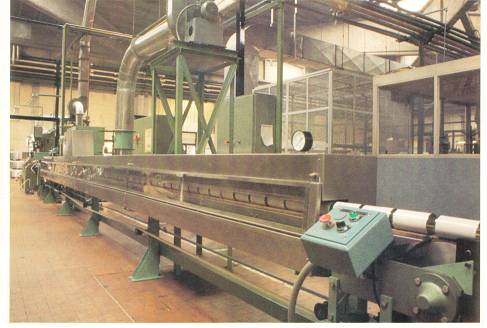
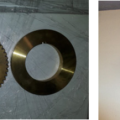

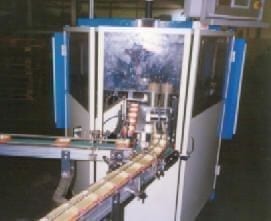
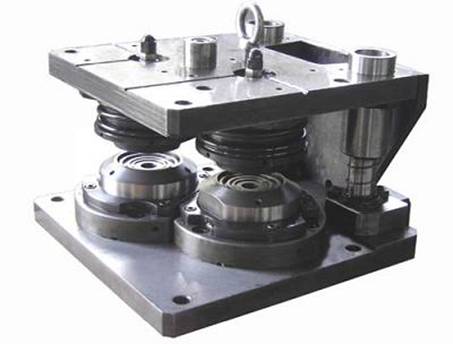
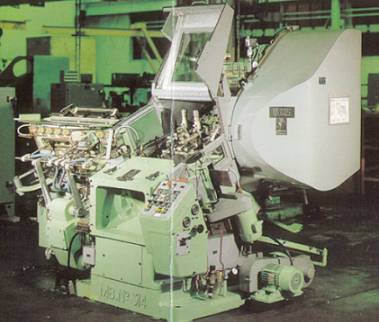

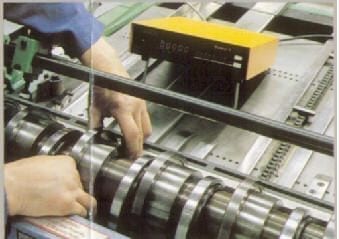
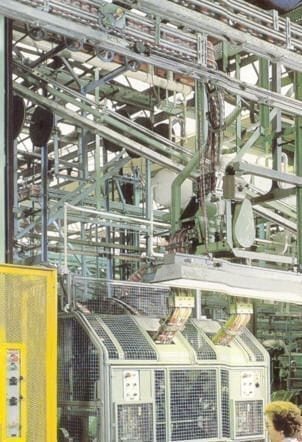




Utility Engineer/Facility Engineer For Plant Job description1. Responsible for establish/forming various system team of facility department, forming yearly working plan and related management norms for facility section and organise implementation.2. Formulate working plan for section employees and reasonably and effectively arrange personnel to implement maintenance by